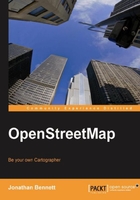
The process of crowdsourcing geographic data is accurate. A 2008 study by Muki Haklay at University College London examined the OpenStreetMap data for the UK in general, and London in particular, and compared it to similar data from Ordnance Survey. Haklay found that where data existed in OpenStreetMap, 80% of it coincided with Ordnance Survey data for the same features. The average distance from an OpenStreetMap feature to an Ordnance Survey equivalent was six metres, less than the general accuracy of GPS positioning, and this didn't take into account the possibility of the Ordnance Survey data being inaccurate.
There were also large areas where there was no data in OpenStreetMap. The conclusion is that if there is a problem with OpenStreetMap data, it is one of completeness rather than positional accuracy. Everything that's there is in the right place, but not everything is mapped yet.
Another vote of confidence in the quality of OpenStreetMap's data comes from one UK local authority, Surrey Heath Borough Council, whose staff have mapped the area covered by the council, and is using OpenStreetMap maps on its website and internally. You will also find maps based on OpenStreetMap data on whitehouse.gov, the website of the President of the United States.